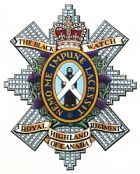Black Friday (1944)
On that day, during World War II's Battle of the Scheldt in The Netherlands, the regiment attacked German positions on a raised railway embankment near the village of Hoogerheide after advancing across 1,200 yards of open beet fields.
[3] Since the Allied forces had landed in Normandy, France on 6 June 1944 *D-Day), the British Second Army had pushed into the Low Countries and captured Brussels, Belgium, and Antwerp, the latter city with its port still intact.
In early October, after Market Garden had failed with heavy losses, Allied forces led by the First Canadian Army set out to bring the port of Antwerp under control.
[4] An area known as "the Coffin" due to its shape on maps was held by entrenched Germans of Battle Group Chill, who controlled the mouth of the Beveland isthmus.
"C" Company jumped off 30 minutes late at the start of the operation due to small arms fire delaying their advance, and the supporting artillery attack was therefore ill-timed.
During their advance across the beet fields, the Canadians experienced heavy German small arms, mortar, and artillery fire (including airbursts), and by 7:35 am, the commanders of both "B" and "C" Companies had been wounded.
By 11:10 am, German troops reoccupied the positions formerly held by "C" Company after the latter’s forwardmost platoon was forced back by heavy machine gun fire.
For about five hours, “there was little change in the companies’ positions.” At 11:45 am, twelve Spitfires conducted a strafing attack on a brickworks near the railroad embankment in an attempt to disrupt the German defences.

